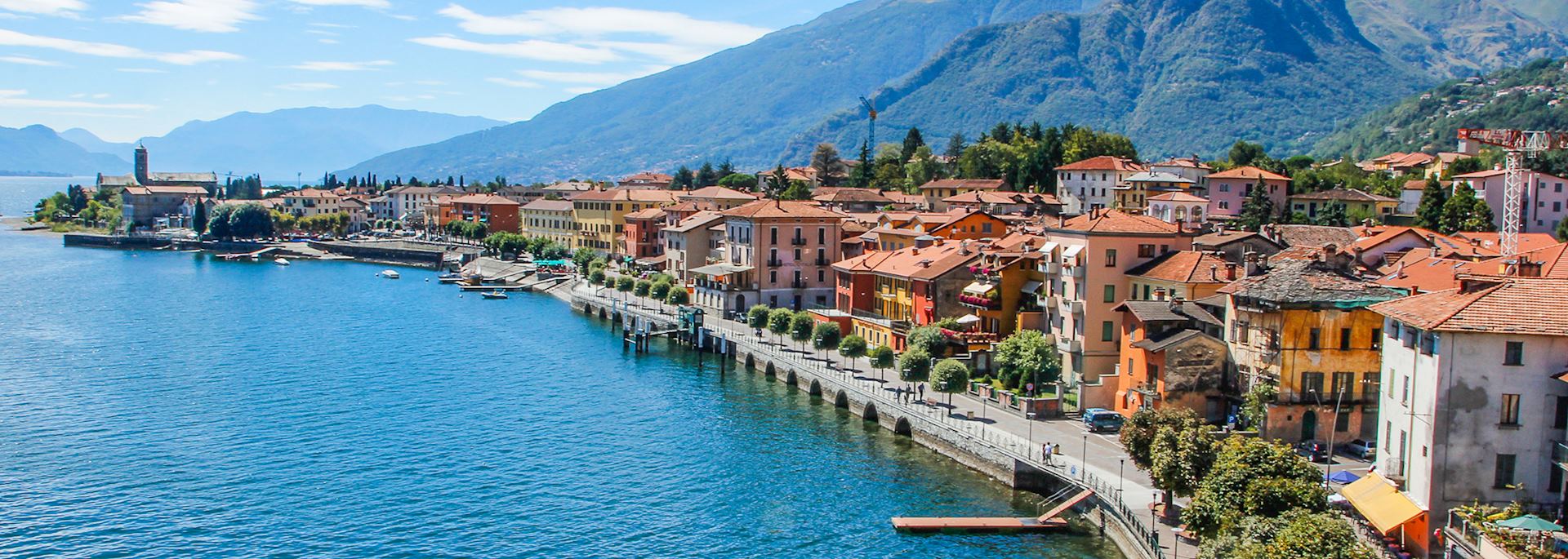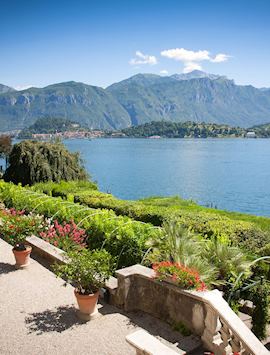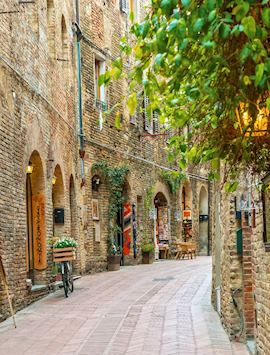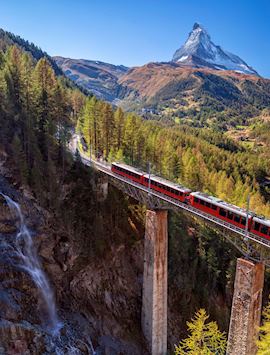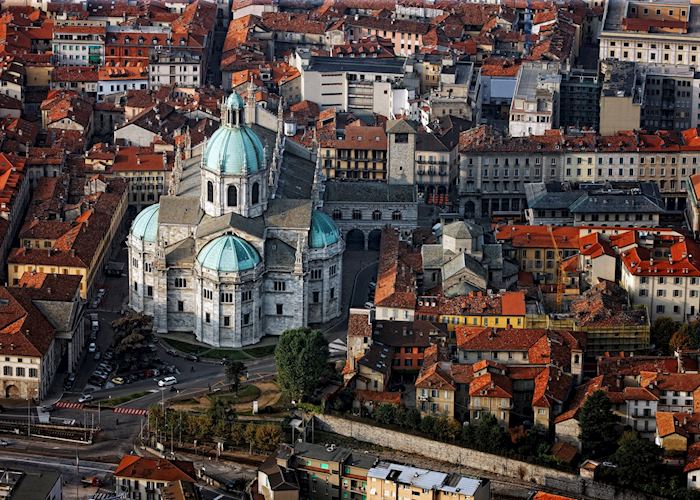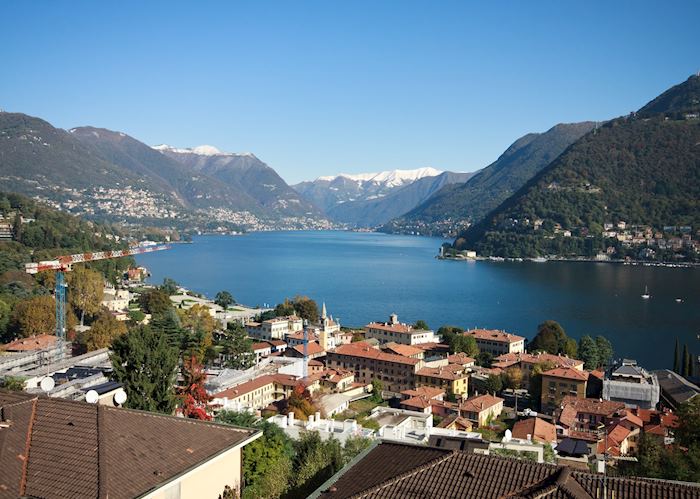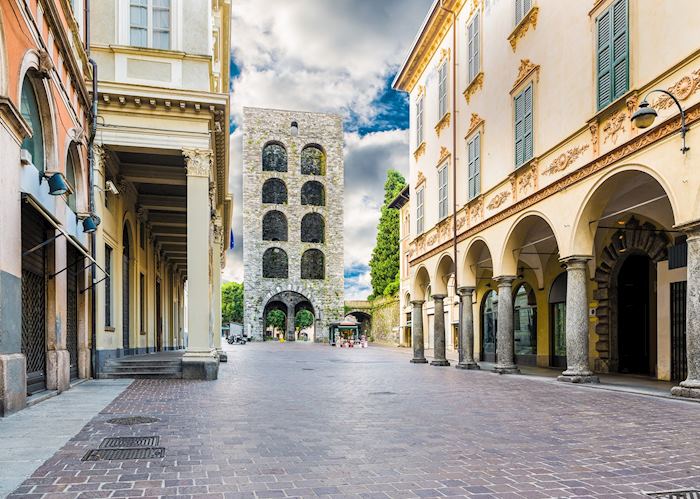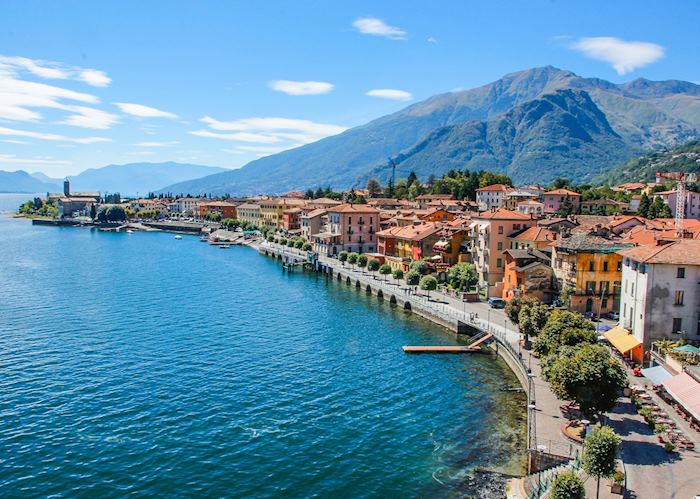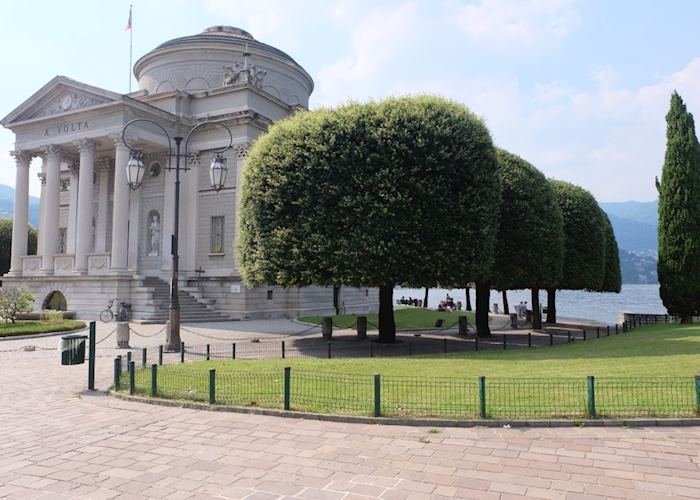Jump to:
At the head of the southwestern leg of Lake Como, the affluent city of Como is the hub of the region. Much of its historic core, the centro storico (old town), dates from medieval times and the city walls hark back to the 12th century.
Shops, cafés and galleries line the narrow, winding streets, a Gothic cathedral graces a central square, and Como's leading figures are commemorated in lavish monuments. With good ferry links to the rest of the lake and a funicular up into the hills, Como proves a versatile base for a visit to the region.
Behind the grand hotels, cafés and gelaterias that jostle for space along the waterfront is the medieval heart of the city, an area of narrow, arcaded lanes, sturdy tower houses and sun-drenched piazzas.
 Its focal point is the large, central Duomo (cathedral), which dominates the skyline as well as the shopping district. Moving farther into the city, Porta Torre, a massive defensive tower, dates from the 12th century and guards what was once the most important gateway to the city. Beyond it are newer streets with well-known Italian shops.
Its focal point is the large, central Duomo (cathedral), which dominates the skyline as well as the shopping district. Moving farther into the city, Porta Torre, a massive defensive tower, dates from the 12th century and guards what was once the most important gateway to the city. Beyond it are newer streets with well-known Italian shops.
Como's marble-clad Duomo sports statues of Roman authors and local heroes Pliny the Elder and Pliny the Younger on its façade. Built between the 14th and 18th centuries, the Duomo is predominantly late Gothic in style with intricate stonework and a soaring Rococo cupola.
Inside, 16th and 17th-century paintings, tapestries and frescoes decorate the walls, while the stained glass dates from the 1800s. Beside the Duomo is the Broletto, Como's town hall, its 13th-century striped marble walls vying for attention.
In medieval times, Como was a highly wealthy place, its fortunes founded on the silk industry. Today, it remains one of Europe's most important silk trading hubs and, as you wander the lanes, you'll find boutiques selling a large range of silk scarves, ties and other garments. The silk museum near the train station explains the history of the trade.
Along with Pliny the Elder and Pliny the Younger, Como celebrates another of its great sons, Alessandro Volta. Volta was born in Como in 1745 and later gained fame as a chemist, physicist and electrical pioneer, who invented the first battery and gave his name to the volt.
A statue of Volta sits in the main square, and you can learn more about his work and see some of his equipment at the Tempio Voltiano, a museum set in a neoclassical building on the waterfront. Nearby is a sculpture by Daniel Libeskind dedicated to Volta.
A walk along the waterfront, from where you can appreciate the views of the lake and mountains beyond, will bring you to the funicular station. The journey up the hillside to the village of Brunate, located high above Como, offers aerial views of Como and the lake.
who's been there
-
617-223-4521617-223-4395
- Make an inquiry
Suggested itineraries featuring Como
Our itineraries will give you suggestions for what is possible when you travel in Como, and they showcase routes we know work particularly well. Treat them as inspiration, because your trip will be created uniquely by one of our specialists.
Places near Como
- Blevio less than 5 miles away
- Torno less than 5 miles away
- Laglio 6 miles away
- Lezzeno 11 miles away
- Tremezzo 14 miles away
- Bellagio 16 miles away
- Lake Como 19 miles away
- Lake Maggiore 24 miles away
- Milan 25 miles away
- Verbania 27 miles away
- Stresa 28 miles away
- Gardone Riviera 73 miles away
- Lake Garda 77 miles away
- Sirmione 78 miles away
- Turin 85 miles away
- Piedmont 86 miles away
- Madonna di Campiglio 89 miles away
- Barbaresco 90 miles away
- Alba 92 miles away
- Parma 92 miles away
- Verona 96 miles away
- Genoa 98 miles away
- Barolo 100 miles away
- Portofino and Santa Margherita 105 miles away
- Modena 121 miles away
- Cinque Terre 122 miles away
- Porto Venere 127 miles away
- Dolomites 138 miles away
- Forte dei Marmi 139 miles away
- Bologna 143 miles away
- Alta Badia 146 miles away
- Pisa 158 miles away
- Venice 160 miles away
- Florence 177 miles away
- Ravenna 180 miles away
- San Gimignano 189 miles away
- Siena 205 miles away
- Perugia 248 miles away
- Assisi 258 miles away
- Umbria 260 miles away
- Orvieto 262 miles away
Photos of Como
Our expert guides to exploring Como
Written by our specialists from their own experiences of visiting Como, these guides will help you make the most of your time there. We share both our practical recommendations and the best ways to appreciate Como at its best.
-
A guide to the regions of Italy ![Local fishing boats, Lake Como]()
A guide to the regions of Italy
A guide to the regions of Italy
A tour of a private palazzo, or a cooking class with a Sorrento grandmother? We highlight the major sights and unearth lesser-known attractions for some of our best-loved Italian regions, spotlighting tours that really explore their character.
Read this guide
